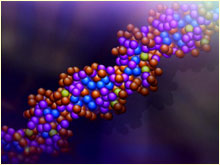Category: Technologies
Infrastructure and Innovation
Human Mini-Brains Growing Inside Rat Bodies Are Starting to Integrate
Full Story – Peter Hess Inverse Stem cell technology has advanced so much that scientists can grow miniature versions of human brains — called organoids, or mini-brains if you want to be cute about it — in the lab, but medical ethicists are concerned about recent developments in this field involving the growth of these…
Read more
Functional Genomic and Computational Assessment of Threats (Fun GCAT)
Paul Kolb – The Functional Genomic and Computational Assessment of Threats (Fun GCAT) program intends to develop new approaches and tools for the screening of nucleic acid sequences, and for the functional annotation and characterization of genes of concern, with the goal of preventing the accidental or intentional creation of a biological threat. More Advances…
Read more
Common Heterogeneous Integration and IP Reuse Strategies (CHIPS)
Dr. Gordon Keeler The explosive growth in mobile and telecommunication markets has pushed the semiconductor industry toward integration of digital, analog, and mixed-signal blocks into system-on-chip (SoC) solutions. Advanced silicon (Si) complementary metal oxide semiconductor (CMOS) technology has enabled this integration, but has also led to a rise in costs associated with design and processing.…
Read more
Blackjack
Mr. Paul “Rusty” Thomas National Security Space (NSS) assets, critical to U.S. warfighting capabilities, traditionally reside in geosynchronous orbit to deliver persistent overhead access to any point on the globe. In the increasingly contested space environment, these exquisite, costly, and monolithic systems have become vulnerable targets that would take years to replace if degraded or…
Read more
Atmospheric Water Extraction (AWE)
Dr. Seth Cohen Water transport is as mission-critical and as logistically challenging as fuel transport for the U.S. military. Meeting deployed military water needs requires equipment resources, consumes fuel, and endangers personnel. The goal of DARPA’s Atmospheric Water Extraction (AWE) program is to provide potable freshwater for a range of military, stabilization, and humanitarian needs…
Read more
Atmosphere as a Sensor (AtmoSense)
Lt. Col. C. David Lewis, USAF The Atmosphere as a Sensor (AtmoSense) program is a fundamental science program that seeks to understand the propagation of mechanical and electromagnetic energy from the surface of the Earth through the Earth’s ionosphere due to transient events such as meteorological sources, geophysical sources, prompt hazards, etc. For example, an…
Read more
Hybrid Forecasting Competition (HFC)
Seth Goldstein – The HFC program seeks to develop and test hybrid geopolitical forecasting systems. These systems will integrate human and machine forecasting components to create maximally accurate, flexible, and scalable forecasting capabilities. Human- generated forecasts may be subject to cognitive biases and/or scalability limits. More Human-generated forecasts may be subject to cognitive biases and/or…
Read more
Finding Engineering-Linked Indicators (FELIX)
David Markowitz – The Finding Engineering-Linked Indicators (FELIX) program seeks to develop new experimental and computational tools to detect engineered biological systems. The development of new biotechnologies is enabling the ability to engineer a diversity of biological systems, with potential benefits ranging from new vaccines and therapeutics to novel materials and improved agriculture. More
Deep Intermodal Video Analytics (DIVA)
Jeff Alstott – The DIVA program intends to develop robust automated activity detection for a multi-camera streaming video enriched by person and object detection, as well as recognition at multiple levels of granularity. DIVA is anticipated to be a three-phase program. The program will focus on three major thrusts throughout all phases: More
Atomic-Photonic Integration (A-PhI)
Dr. John Burke Atom-based devices have proven to be the most accurate means of measuring the physical world. Two areas of great promise are the ability to measure frequency with optically probed trapped atom clocks as well as optically cooled atom interferometer inertial sensors. Together, they could form the basis of a fully autonomous navigation…
Read more









